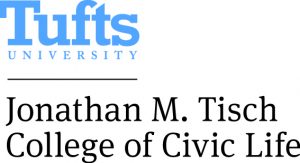Often, a group is defined wrong. We may be excluded from a decision-making group that should include us, or we may exclude people who should be part of our group, or we may not want to be part of group that currently includes us. Mohandas K. Gandhi wanted the people of India to leave the British Empire and become citizens of a free India. Martin Luther King Jr. wanted African Americans to become full citizens of the United States; he endorsed what he called a “revolution to ‘get in.’”
Activities
- Equity analysisTufts’ Equity in America website allows you to choose demographic characteristics and social outcomes and see how they relate. By comparing such results, you can detect differences among groups and ask whether they manifest injustices. Choose several topics, run comparisons, and discuss.
- Facing Racism in a Diverse NationEveryday Democracy’s Facing Racism in a Diverse Nation “is a six-session discussion guide to help all kinds of people take part in meaningful dialogue to examine gaps among racial and ethnic groups and create institutional and policy change.”
- Nonviolent methodsGene Sharp (1928-2018) looked at thousands of specific examples of nonviolent episodes and campaigns and identified 198 methods. He categorized them under two major headings, “Nonviolent Protest and Persuasion” and “Noncooperation.” Under those major headings are many specific categories, such as “Symbolic Public Actions” or “Actions by Consumers.” The Global Nonviolent Action Database from Swarthmore … Continue reading
Concepts
- Intergroup contactIn 1954, Gordon Allport proposed that prejudice (particularly racial prejudice) may be reduced by equal status contact between majority and minority groups in the pursuit of common goals. The effect is greatly enhanced if this contact is sanctioned by institutional supports (i.e., by law, custom, or local atmosphere), and provided it is of a sort … Continue reading
- Multiracial democracyThe “North Star” of the Tisch College of Civic Life at Tufts University is “building robust, inclusive democracy for an increasingly multiracial society.” This ideal combines: A commitment to democratic forms of governance; A recognition of racial inequity as a basic obstacle to full democracy; An embrace of the full creative participation of all people; … Continue reading
- Race and racismContents Background Race is a social construct. The racial categories that are widely used today have histories; they were not recognized before the late Middle Ages. They are closely connected to the history of colonialism and slavery. They arose with what Kwame Anthony Appiah calls “racialism,” the false “view that humans naturally divide into a … Continue reading
- BoundariesExamples of boundaries that are relevant to civic life include national borders, electoral districts, the membership lists of organizations and associations, and the limits of watersheds and forests. All of these mark distinctions between inside and outside. Boundaries that exclude should be critically evaluated; the exclusion may be unjust. At the same time, research on … Continue reading
- Exit, Voice and LoyaltyIn Exit, Voice and Loyalty (1970), Albert O. Hirschman argues that people who are dissatisfied with groups of all kinds have two basic choices: Exit: Leaving the group. Then they do not have to put up with it or continue to be complicit in its actions. Exit is a human right. It can also improve … Continue reading

